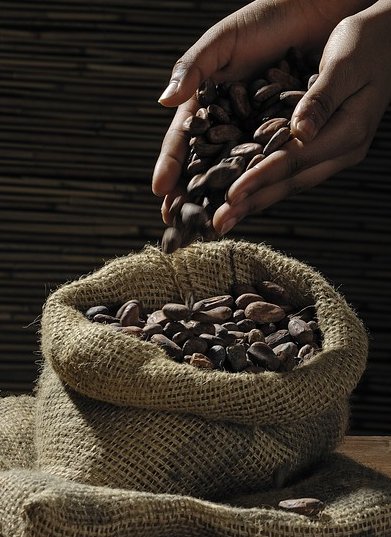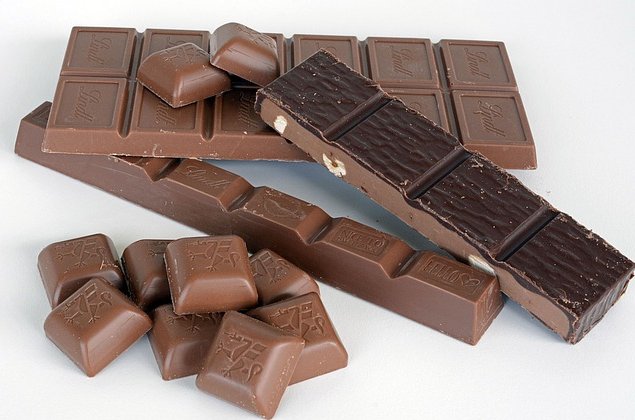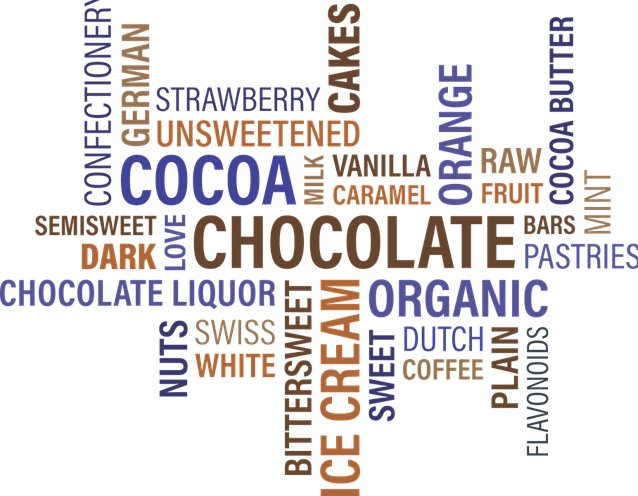Chocolate anyone
Ancient peoples of Mesoamerica were the first to cultivate the cacao trees that grew wild in the tropical rainforests of Central America. It was home to the Olmec, Aztec, and Mayan cultures. The area around the equator had just the right conditions for the cacao trees to grow and flourish. The use of chocolate has been dated to around 1400 BC in Honduras where evidence was found in numerous urns and vessels containing the residue of chocolate.
The Mesoamerican people roasted, fermented and made a paste of the cacao beans. They added water to the paste along with some chilli peppers, spices, vanilla and honey to make their drink.

The Olmec inhabited the South west corner of Mexico. They were probably the first of the Mesoamerican people to use the cacao beans. The bitter chocolate drink was used in religious ceremonies and it was thought to have medicinal benefits for the people.
The Aztecs only used the chocolate drink for religious purposes. It was not like the chocolate drinks we enjoy today. Sugar didn't grow in Central America so the drink was bitter, they did mix it with spices and wine or even a puree of corn. In Aztec folk lore there is a legend about the God Quetzalcoatl. It was believed he brought the cacao down to earth and shared it with the people. He was punished and cast out of paradise because only Gods were seen fit to drink the chocolate.
The Aztecs believed chocolate had magical and spiritual qualities. We know how we react to chocolate now. Well, back then it was no different, It would lift peoples moods. When Aztec sacrifice victims weren't feeling the love of sacrifice they would be given a drink of chocolate mixed with the blood of the victims before them. It was hoped to lighten the moods and cheer them up because don't you know you were supposed to be happy about being sacrifice to the Gods. It was a great honour. The only other people allowed to drink chocolate were rulers (they were even buried with it), warriors, priests and high ranking noble citizens at sacred ceremonies.
The Mayans had the honour of being the birth place of chocolate. The cacao beans had great value. They were used as a form of currency and were the force behind the Aztec economy. If you wanted to buy a rabbit it would cost you 10 beans. One hundred beans could buy you a slave. The cacao beans were so valued they were kept in a locked box similar to what the British did with their tea. The beans were used as currency up until the nineteenth century. Even back then people tried to counterfeit them. So counterfeiting isn't a modern day concept.
It wasn't until after the Spanish conquest of the Aztecs that chocolate first appeared in Europe. The Spanish used it as a health food, medicine prescribed for curing fevers, aiding in indigestion, and pain relief.
Europeans specifically the English, Dutch and French established cacao and sugar plantations in Sri Lanka, Venezuela, Java, Sumatra, The West Indies and Africa to meet the demand for the cacao. By the time the plantations were producing, the skilled Mesoamerican workers were dying of European diseases so slaves were brought out of Africa to work the plantations.

The first chocolate house was established in 1657 in London England. It served the same purpose as Starbucks and Tim Hortons today. People would spend time drinking chocolate, playing cards and talking politics.
In 1815 a Dutch chemist introduce alkaline salts to the chocolate. It took most of the bitterness away. In 1828 a press was developed to separate the majority of the cacao butter and the liquid chocolate. Joseph Fry (Fry's coco) developed a way to make chocolate moldable by adding some of the cacao butter back into the liquid and in 1875 Daniel Peter invented milk chocolate by mixing a powdered milk that Henry Nestle developed with the chocolate liquid. By 1879 Rudolph Lindt improved on the taste and texture of chocolate. These names are still the big guns of the chocolate world today. You can also add Cadburys and Mars to the list.

Today 2/3 of the worlds cacao is grown in Western Africa. The average American is known to eat or drink his way through 12 pounds of chocolate a year and in that year world wide an astonishing 75 billion dollars is spent on chocolate.
Yum
Join FREE & Launch Your Business!
Exclusive Bonus - Offer Ends at Midnight Today
00
Hours
:
00
Minutes
:
00
Seconds
2,000 AI Credits Worth $10 USD
Build a Logo + Website That Attracts Customers
400 Credits
Discover Hot Niches with AI Market Research
100 Credits
Create SEO Content That Ranks & Converts
800 Credits
Find Affiliate Offers Up to $500/Sale
10 Credits
Access a Community of 2.9M+ Members
Recent Comments
38
kate, Very wonderful post filled with great historical and ancient history. Thank you for sharing this information. I am a dark chocolate lover, because it have some essential vitamins that our bodies need, and can benefit from.
Hi, Louisa, you're welcome and thanks for taking the time to read and comment on the post. It's dark chocolate all the way for me too. All the best.
Ann
I like bittersweet chocolate myself. We produce a certain amount of it here in Ecuador. I am originally from Pennsylvania and the Hershey Chocolate Company has a great history. You can write many pages on that guy and his idiosyncrasies. I enjoyed your post. A good read. Bob
Hi, Bob, I think more and more people are liking dark chocolate. Hershey sounds like someone I'd like to research. Do the cacao trees grow near you? Thanks for reading and commenting. All the best.
Ann
I have not heard about cacao trees in this area. Between here and Guayaquil I see banana plantations and coconut plantations. The Santa Rosa section of Salinas is very big for fishing and supplies seafood for lots of Ecuador. Cacao needs a rain forest with overhead canopy. The Amazon is where it is grown. This peninsula is too dry and too sunny. I am on the west side of the Andes. The Amazon is on the east side of the Andes. This is a poor country, but there are still companies that make a high quality chocolate. I don't eat it often because it is so rich. I really love orange chocolate, but the orange peel they put in is hard on the gallbladder. Chocolate with nuts: oh boy! Enough! Take care my friend. Bob
See more comments
Join FREE & Launch Your Business!
Exclusive Bonus - Offer Ends at Midnight Today
00
Hours
:
00
Minutes
:
00
Seconds
2,000 AI Credits Worth $10 USD
Build a Logo + Website That Attracts Customers
400 Credits
Discover Hot Niches with AI Market Research
100 Credits
Create SEO Content That Ranks & Converts
800 Credits
Find Affiliate Offers Up to $500/Sale
10 Credits
Access a Community of 2.9M+ Members
Wow- you've done a lot of research on that little bean. I didn't realize that the majority of cacao is grown in Western Africa. Now I'm curious who grows the rest.
Hi, Sondra, that's a good question I'll have to check it out. Thanks for reading the post. I hope you enjoyed it. All the best.
Ann